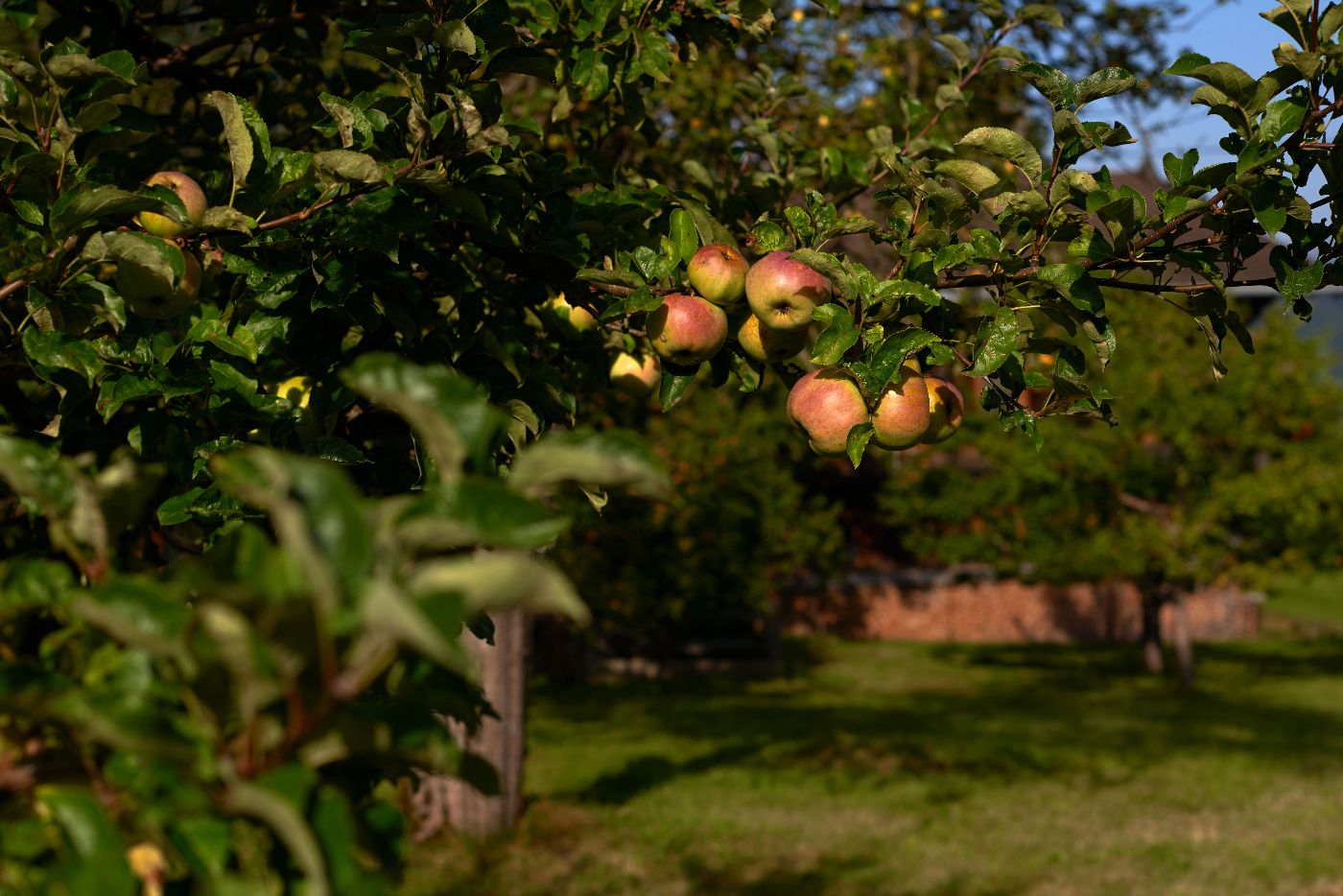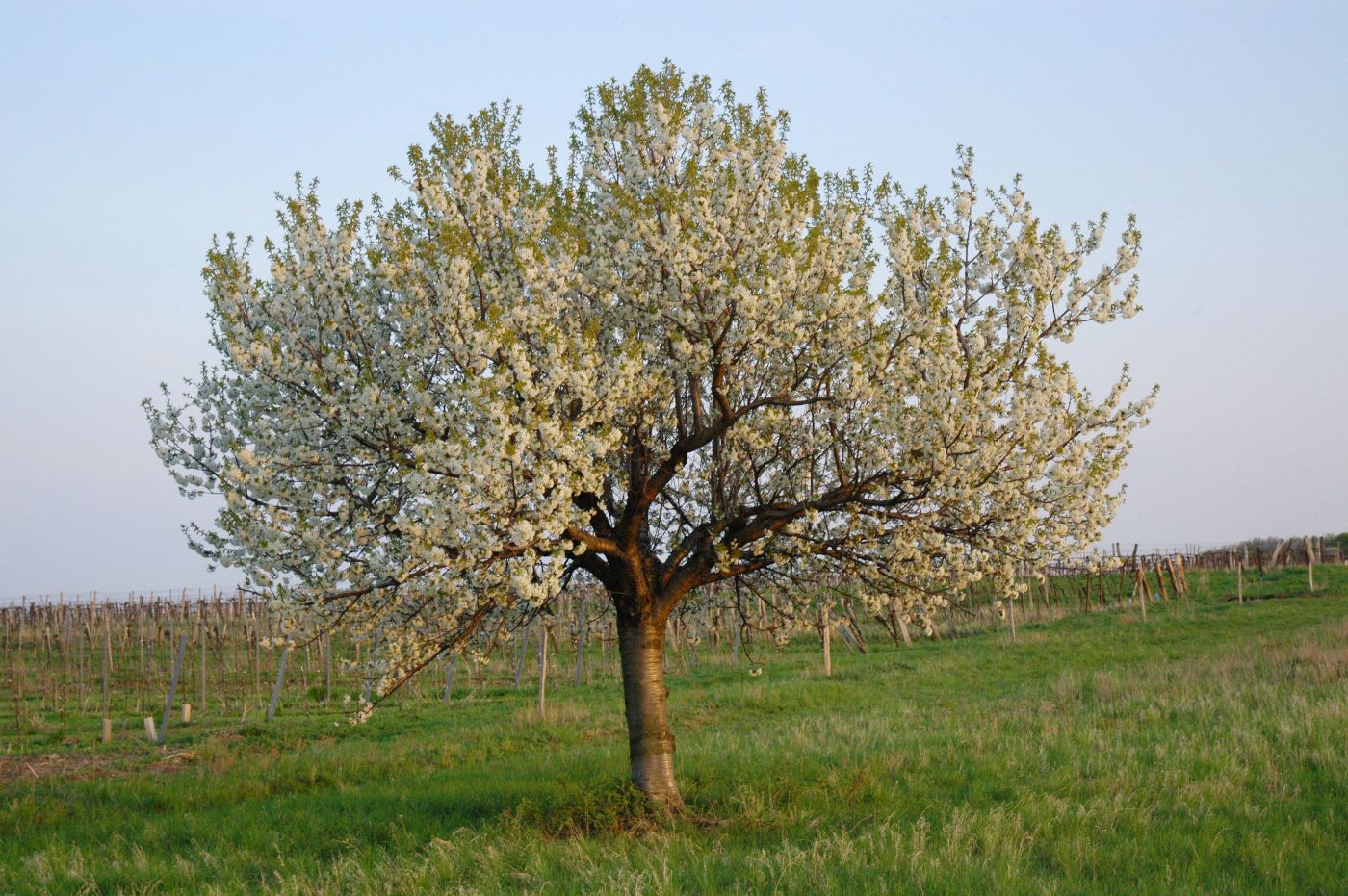In 8 steps to your tree of life

Plant your own tree!
To many people their garden is an important place of balance, a very personal environment. It is a living space designed according to their personal needs, ideas and creative concepts. A tree at the front door will provide some extra quality of life for generations.
From root to crown trees offer an area of living for countless animals. They provide shade and food, playing ground and energy. In addition to the aesthetic aspect, they fulfil many environmental functions. They fix carbon dioxide, filter dust and pollutants from the air, provide cooling and in this way improve the climate.
There is a wide range of species, varieties and cultivars. The right selection will provide pleasure for decades. A tree only develops its full splendour in the course of time.
These eight points will help you in decision-making:
1. Think in peace
Take your time to make your choice!
2. Choice of the plant species and variety
What do you want from your tree of life? Fresh fruit, fragrant blossoms, privacy from your neighbours, a shady place in summer, beautiful autumn colours of the leaves, a climbing facility for children, food for birds and butterflies?
There are suitable species for different soil and climate conditions. Consulting the local nursery is worthwhile.
By choosing a local tree you help the fauna in your garden and preserve biodiversity right on your doorstep. Consider the size of the tree crown that will later provide shade as well as the light and soil conditions in your garden in your purchasing decision. Is the soil acidic, loamy, moist or gravelly, sandy or chalky? Criteria of suitability for the location, such as robustness and an undemanding nature, should be the main criteria for purchase.

3. The right location
Before purchasing you should know the future location of the plant in your garden. Growth height, crown size and flowering behaviour as well as combinations with other plants play an important part in the decision. If possible, the tree should not be planted in a location exposed to strong winds or in a hollow.
Give your tree enough space to develop properly. Depending on the expected crown size, trees need 2 to 5 metres distance to buildings, walls and other plants. In this way, you can avoid dying off or meagre growth due to lack of light or nutrients.
4. The purchase
Woody plants are sold either bare-rooted (without pot or soil), with root ball or in a pot. In your regional tree nursery you are on the safe side. The tree is adapted to the climatic conditions of the region and therefore has a starting advantage. Make sure the bark is flawless. Trunk, crown and root ball should be well balanced. A plant with a root ball that is too small will not be adequately supplied. An even crown structure and a continuous leading shoot enable the formation of a beautiful crown.
5. When to plant the tree
The best times for planting are spring and autumn. Plant your tree as soon as possible after purchase, in mild weather. Careful planting and tending during the early growth period are important for a good start.
Damaged or injured roots must be cut off and roots that are too long must be shortened. This applies especially to bare-rooted trees. If a plant is in the pot, remove the flower pot and pull the roots apart slightly. This will stimulate root development. Place the plants in a bucket of water for about one hour before planting them out.
6. Off into the planting hole
With a sufficiently large planting hole, professional root cutting and pruning and a tree support against the wind, your woody plant will have optimal starting conditions. It will become stronger and more resistant to diseases and pests.
The planting hole should be at least twice as large as the root mass or root ball. Before planting, thoroughly loosen up the soil in the hole and at its edge. Make sure that the bottom is not compacted.
The planting depth should be the same as in the nursery. You can tell that from the brownish discolouration at the root neck. With an older specimen, it is advisable to maintain the orientation of the tree in terms of the directions.
The excavated material with which the hole is then filled again can be improved with sand, humus or mature compost. When filling the soil into the planting hole, you should shake your plant slightly to avoid cavities. All roots must be covered. Then straighten the plant and press the soil with your foot.
After planting, it is important to water the plant abundantly.

7. Support and protection for your tree
In the first two to three years, a tree support against strong wind is needed - use a coconut string, which does not grow in and therefore does not damage the trunk, for tying up. At least, a stake should be placed on the side of the main wind direction. The roots must not be injured. The tree is tied to the support one hand's width below the crown base. Regular re-tying is necessary.
The ground area around the trunk, which corresponds to the diameter of the crown, is the so-called ‘tree disc‘. During the first years after planting, the tree disc should be kept free of grass by mulching and fertilised with compost in spring. With stones on the tree disc, you offer shelter to many animals.
In case of longer dry periods young trees should be watered rarely but extensively directly in the root area.
Your tree does not necessarily have to be pruned, but targeted pruning usually results in faster and higher yield.
8. Gardening without poison
A lot of the damage caused to plants by insects, fungi and other pests can easily be prevented or minimised in the first place. The key factors for a healthy plant are the right choice of species and location as well as careful tending and fertilisation.
Before spraying chemical agents to combat pests or plant diseases, you should check whether the pillars of healthy plant growth are in place. The following points are particularly important in prevention and should be considered in the event of pest infestation and disease:
- Site, climate, soil
- Growing and cultivation method
- Fertilisation and soil preparation
- Planting and tending
- Crop rotation and mixed cultivation
- Choice of varieties
- Mulching and ground cover
The more bushes, flowers and trees, hidden corners and niches exist, the more beneficial organisms will visit your garden. A garden with a great variety of species provides enough food and habitat for the natural enemies of pests!